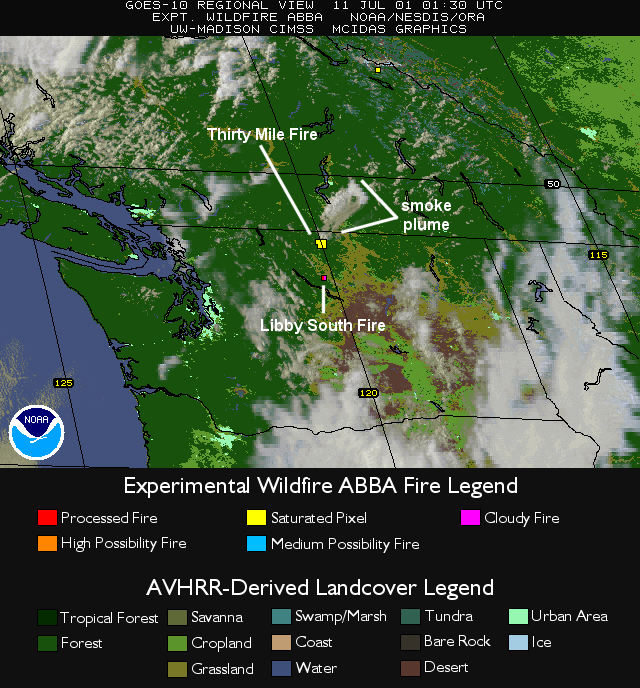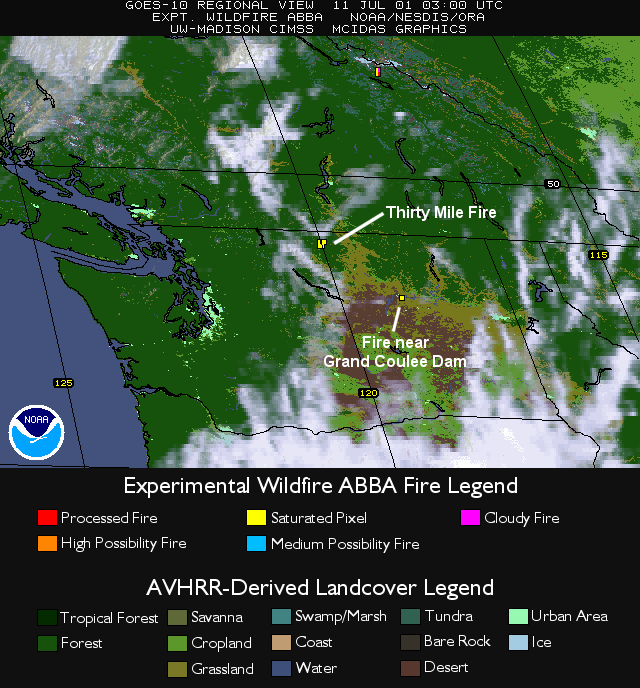
|
|
On July 10, 2001 what had been a small blaze started by an unattended campfire exploded out of control,
killing four Washington
State firefighters in the process. Located thirty miles northwest of Winthrop, WA in the
Chewuch River Valley, the 100 acre Thirty Mile Fire was considered contained at around 1:30 PM PDT.
Shortly thereafter 100+ degree temperatures, extremely dry conditions, and high winds caused the
fire to explode to a size of 2,500 acres in the space of a few hours. The fire had consumed over 8,200
acres of the Okanogan National Forest by July 13, 2001.

|
|
The Wildfire Automated Biomass Burning Algorithm (WFABBA), using data from NOAA's GOES-10 satellite, documented the rapid intensification of the Thirty Mile Fire. The detected fire grew rapidly between 3:30 PM PDT and 5:30 PM PDT, as seen in this loop. Imagery combining surface observations and GOES-10 visible data illustrate the low dewpoints (upper 30s to low 50s) and high temperatures (upper 90s to lower 100s) that were common in the region. A meteogram from nearby Omak, WA illustrates the temperature rise and low dewpoints in the region throughout the day. The rapid cloud movement in the GOES-10 visible imagery loop reflects the strong, southwesterly winds present above the boundary layer. Overall conditions were similar to those in Idaho and Montana in August of 2000, when similar conditions encouraged several large wildfires. The visible imagery of the smoke plume also suggests the presence of cumulus clouds within the plume, which would be consistent with the strong updraft produced by the fire and the presence of water vapor above the boundary layer (as reflected by the cumulus clouds that formed throughout the region). These same clouds appear as cold cloud-tops in the WFABBA loop after sunset.
While the Thirty Mile Fire was the most dramatic fire in Washington state, the Libby South and Grand Coulee Fires were also large and expanded quickly, having burned areas of 3,300 and 2,500 acres, respectively, by July 13. The Libby South (aka Twisp) Fire was visible in NOAA-14 AVHRR imagery on Monday, July 9. False-color three channel imagery of the fire and plume is shown below. WFABBA imagery from 8:00 PM PDT shows the Thirty Mile and Grand Coulee Fires.
|
|

|
